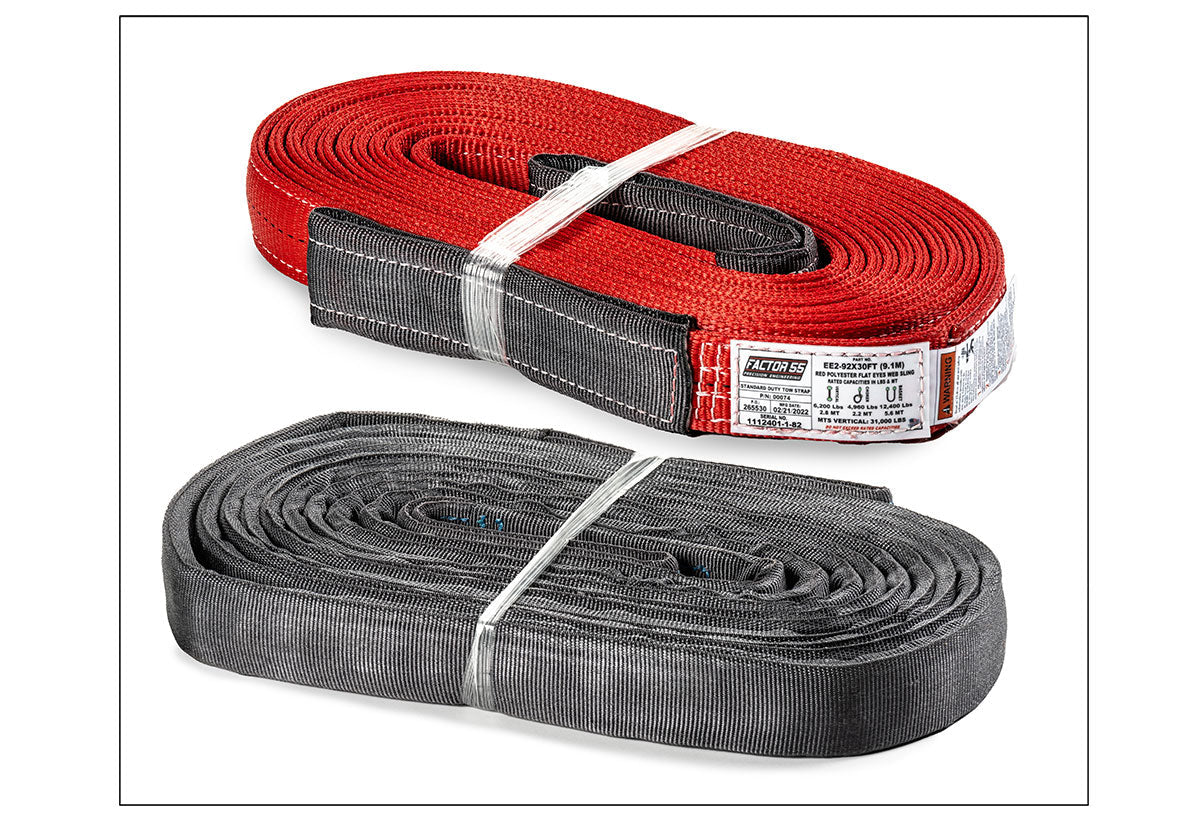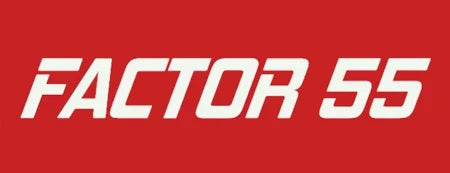

The terms “tow strap” and “recovery strap” gets thrown around a lot. Similarly, when to use a tow strap, and when to use a recovery strap/kinetic rope can often be confusing. These are very different items, and using the right ones can be the difference between getting recovered or not. Plus, you can damage your vehicle if you use the wrong kind. Let’s set the record straight about tow straps and learn about recovery straps (and kinetic ropes), too.
What Is a Tow Strap?
Simply put, a tow strap generally refers to a flat woven fabric cord used to tow another vehicle. They can be made from a host of materials, but the intent is to pull or tow in a steady manner.Tow straps are made from low-stretch material, as they’re designed to pull a vehicle on a trail or road under a consistent load. You wouldn’t want a tow strap with elastic properties, the strap would build up kinetic energy and yank whatever vehicle you have in tow toward the vehicle doing the towing. Tow straps should not be confused with “dynamic” recovery straps like “snatch” straps or Kinetic Recovery Ropes. A tow strap should be rated properly for whatever you’re going to pull down the road/trail.
 Shown above: Factor 55 Standard Duty Tow Strap (top), and the Factor 55 Extreme Duty Tow Strap. Both are premium quality, made in America products
Shown above: Factor 55 Standard Duty Tow Strap (top), and the Factor 55 Extreme Duty Tow Strap. Both are premium quality, made in America products
When to Use a Tow Strap
It almost goes without saying, but if you’re going to tow a vehicle behind another one, you’ll want to use a tow strap. Additionally, if you don’t have a dedicated winch line extension and need more rope, a tow strap can be an appropriate piece of kit. In a pinch, you could use a tow strap as a tree saver strap, but tree saver straps are shorter and wider and made specifically for use around the girth and abrasive nature of a tree trunk.
Factor 55 offers two dedicated tow straps. the Standard Duty and Extreme Duty. Both are 30’ long by 2” wide, but the Extreme Duty strap includes a full-length Cordura abrasion sleeve to protect it. Both are ultra-high quality, made in the USA, and have big 31,000 lb. breaking strengths.
Do not use a tow strap as a recovery strap/kinetic rope, however. Speaking of …

What Is a Recovery Strap/Kinetic Rope?
Unlike a tow strap, a recovery strap or kinetic rope is designed to stretch and be elastic. This is because you want to build up potential energy when doing a kinetic recovery. In other words, if you have a stuck vehicle, you can attach one end of a recovery strap or kinetic rope toone of its proper recovery points, and another to a vehicle that will pull the stuck vehicle out. As the support vehicle moves and pulls, tension is put on the recovery strap/kinetic rope. This kinetic energy builds and transfers to the stuck vehicle. This will create a snatch effect which the energy is imparted on the stuck rig, freeing it (assuming there’s enough force).
 The Factor 55 Kintetic rope stretches up to 30 percent of its total length, for easy extraction from sand, mud, and snow. Flexible, durable, weather-resistant polymeric coating for extreme durability, and rubberized rope eyes for maximum durability at the wear points of the rope.
The Factor 55 Kintetic rope stretches up to 30 percent of its total length, for easy extraction from sand, mud, and snow. Flexible, durable, weather-resistant polymeric coating for extreme durability, and rubberized rope eyes for maximum durability at the wear points of the rope.
Unlike a tow strap, a recovery strap or kinetic rope is designed to stretch and be elastic. This is because you want to build up potential energy when doing a kinetic recovery. In other words, if you have a stuck vehicle, you can attach one end of a recovery strap or kinetic rope toone of its proper recovery points, and another to a vehicle that will pull the stuck vehicle out. As the support vehicle moves and pulls, tension is put on the recovery strap/kinetic rope. This kinetic energy builds and transfers to the stuck vehicle. This will create a snatch effect which the energy is imparted on the stuck rig, freeing it (assuming there’s enough force).


When to Use a Recovery Strap or Kinetic Rope
You’ll want to use a recovery strap or kinetic rope when pulling another vehicle out of a stuck situation. You’ll need to have the strap/rope attached to proper recovery points, and have some slack laid out on the ground. The vehicle doing the pulling will need to get a running start (not too big initially) to yank the stuck vehicle out. If the first tug doesn’t work, you may need more slack and a little more throttle.
Before attempting a kinetic recovery, be sure everyone around both vehicles are safely out of the way. And never, ever attach a recovery strap or kinetic rope to the ball on a receiver. This can create a deadly scenario as the ball can become a projectile! Always use proper recovery points. Check out our blog post on how to use a Factor 55 kinetic rope for all the info. And remember, our kinetic ropes are available in different sizes for a variety of vehicle capacities, from powersports vehicles to big rigs.
Do not use recovery strap/kinetic rope as a tow strap. The elastic property will build up energy and can potentially slingshot the vehicle being towed toward the tow vehicle. Also don’t use a recovery strap/kinetic rope as a tree saver strap. You want minimal stretch at winch anchor points.
Use the Right Tool for the Job
When it comes to tow straps and recovery straps/kinetic ropes, you’ll want to choose the right tool for the job. The two aren’t interchangeable. One commonality? They need to be properly rated for the task at hand. They should also be used with best practices and correct techniques to ensure you’re successful at whatever you’re trying to do.
